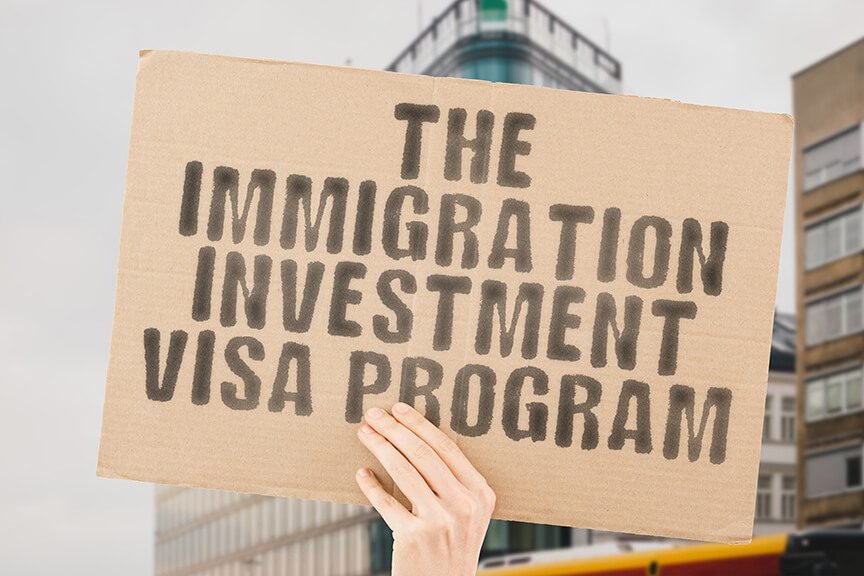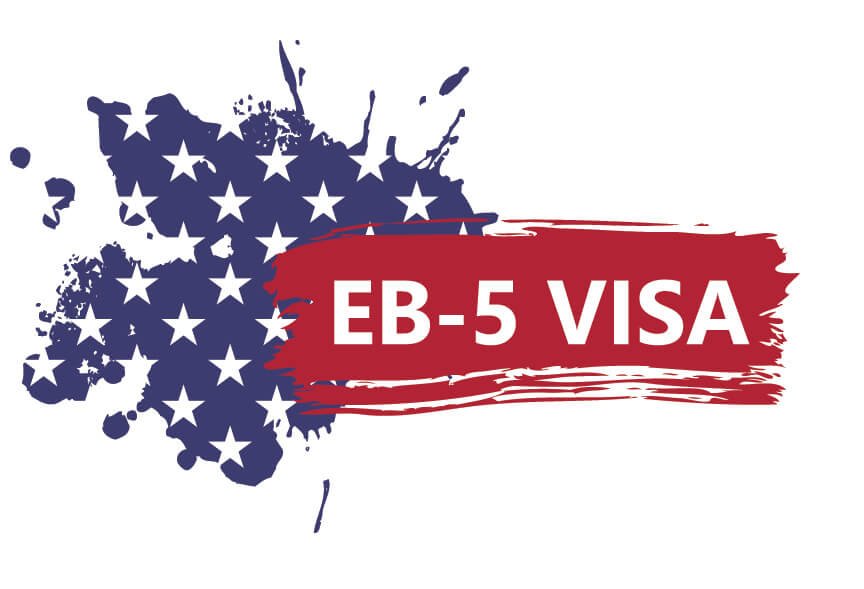Every year, hundreds of thousands of people around the world apply for different kinds of immigrant visa that would allow them to become lawful permanent residents in the United States (commonly known as green cards). One of the increasingly popular option these days is the EB-5 visa, or the Employment-Based Fifth Preference visa, largely because of the relatively shorter EB 5 visa processing time.
While there are multiple ways to gain permanent resident status in the U.S., such as the Diversity Immigrant Visa Program (also known as the green card lottery), most of them tend to take an exceptionally long time. EB 5, on the other hand, provides a relatively quicker route for those who are willing to invest a certain amount of capital in a U.S. business.
In this guide, you find details about the EB 5 — what is it, how much you need to invest, and what are the other requirements, etc. We will also address one trending topic: what factors determine the length of EB 5 visa processing time, and why it takes longer in certain situations.

What is the EB 5 program?
EB 5 is an immigration program in the U.S. that provides applicants with a pathway to acquire lawful permanent residence. Those participating in this program are essentially foreign investors who make a qualifying capital investment in a new commercial enterprise in the country.
The U.S. government first established the EB-5 program with the aim of stimulating the U.S. economy and creating job opportunities by bringing in foreign capital. It allows immigrant investors and their immediate family members (spouse and unmarried children under 21) to gain conditional permanent residency status, which can be converted to permanent residency status if all the program requirements are met.
Successful EB-5 applicants can eventually apply for United States citizenship if they meet the necessary residency and other requirements. This can be completed in as little as 5 years after achieving permanent resident status.
How EB 5 Differs from Other Visa Categories
Investment Requirement
EB-5 visa is different from other visa categories in several ways:
The primary requirement of the EB-5 visa is a substantial investment in a new commercial enterprise in the U.S. (hence the applicant is sometimes called an immigrant investor). The minimum investment amount is significantly higher compared to other employment-based visas, such as the H-1B or L-1 visas, which are primarily designed for temporary employment in specific occupations or intra-company transfers.
Job Creation
The EB-5 visa requires the creation or preservation of a minimum number of full-time jobs for qualified U.S. workers. This job creation requirement is not in most other employment-based visa categories, where the focus is primarily on the applicant’s qualifications and the sponsoring employer’s need for their skills.
Path to Permanent Residency
The EB-5 visa offers a direct path to permanent immigration status (green card) for the immigrant investor, their spouse, and unmarried children under 21 years old. Other employment-based visas typically grant temporary or non-immigrant status and may require separate applications or processes for permanent residency.
Country-Specific Quota
The EB-5 visa is subject to a country-specific quota, known as the per-country limit. This means that in any given fiscal year, no more than a certain percentage of EB-5 visas can be issued to applicants from a particular country. This quota can lead to longer waiting periods for applicants from countries with high demand for the visa.
Regional Center Program
The EB-5 program includes a Regional Center Pilot Program, which allows investors to invest in approved regional centers that promote economic development in specific areas. Investments made through regional centers may have different job creation requirements and offer certain advantages, such as indirect job creation and more flexible job counting methodologies.

How Do I Become Eligible for EB 5?
As mentioned above, for an investor to be eligible for the EB-5 visa, he or she must invest a certain amount of capital into a new commercial enterprise in the U.S. and create or preserve a minimum number of full-time jobs for qualified U.S. workers.
The required minimum investment varies depending on the location of the investment. Currently, the minimum required is $1.8 million for investments made in areas other than a Targeted Employment Area (TEAs), which are designated as high unemployment or rural areas. In TEAs, the minimum investment is $900,000.
Bear in mind that all the information we provide here, including the regulations and requirements, is subject to change by the government. So before making any decision, be sure to consult with an investor’s immigration attorney or the U.S. Citizenship and Immigration Services (USCIS) for the most up-to-date and accurate information regarding the EB-5 visa program
What is the Processing Time for EB 5?
The processing time for the EB-5 visa can vary significantly based on several factors, including the complexity of the case, the workload of the U.S. Citizenship and Immigration Services (USCIS), and other external factors. Note that processing times can change over time, and there can be fluctuations or delays in the processing of EB-5 visa applications. For the latest information on processing time, check the USCIS website or speak with an immigration attorney.

What are the Steps to Apply for EB 5?
The EB-5 visa application process involves multiple stages, with each stage having its own processing time and reasons for delays. The overall processing time can vary between 18 months to over 60 months, depending on the specific circumstances. We recommend that you follow these steps:
Conduct Thorough Research
To begin the process, you should try to familiarize yourself with all the program’s requirements, investment options, and regional centers. This is also the time when you should start looking for an immigration attorney or professional experienced in EB-5 matters who can assist you along the way.
Select an Investment Project
Next, you need to choose an EB-5 project that aligns with your investment goals, risk tolerance, and personal preferences. Consider factors such as the project’s location, industry, job creation potential, financial viability, and track record.
Make the Investment
After identifying the project, you need to invest the required capital into a new commercial enterprise. Currently, the minimum investment amount is $1.8 million for projects outside targeted employment areas (TEAs) or $900,000 for projects located in TEAs.
Gather Documentation
Collect the necessary documents to support your EB-5 application. This may include financial records, source of funds documentation, business plans, investment agreements, and more. It is crucial to maintain a clear and well-documented trail of your investment funds.
File the I-526 Petition
Submit the Form I-526, Immigrant Petition by Alien Entrepreneur, to the U.S. Citizenship and Immigration Services (USCIS). This petition demonstrates your eligibility for the EB-5 program and includes evidence of your investment, job creation projections, and other required documentation.
Conditional Green Card Application (if the I-526 is Approved)
If the USCIS approves your I-526 petition, you and your eligible family members can apply for conditional permanent residency by filing Form I-485, Application to Register Permanent Residence or Adjust Status (if you are already in the U.S.) or through consular processing (if you are outside the U.S.).
Remove Conditions
During the 90-day period prior to the second anniversary of obtaining conditional permanent residency, you must file Form I-829, Petition by Entrepreneur to Remove Conditions on Permanent Resident Status. This petition demonstrates that your investment has been sustained and has created the required jobs. Upon approval, the conditions on your permanent residency are removed, and you and your family become unconditional permanent residents.

What are the Reasons for the Delays in EB 5 Processing Time?
In the past couple of years, the media have reported substantial delays in EB-5 processing time. While the disruption caused by the COVID-19 pandemic certainly played a major role, there are other factors that may cause individual cases to be held up. Here are just a few of them:
Visa Backlogs
The demand for EB-5 visas has been high in recent years. With limited annual quota and demand exceeding the available visas, applicants may experience delays in obtaining their visas.
USCIS Processing Times
The USCIS is responsible for processing EB-5 petitions and applications. Delays can occur due to increased workload, staffing shortages, changes in immigration policies, or other administrative factors.
Increased Scrutiny and Regulations
The EB-5 program has faced increased scrutiny and regulatory changes over the years to address issues such as fraud and national security concerns. These changes can result in additional processing steps or longer review times, causing delays for applicants.
Source of Funds Verification
One crucial aspect of the EB-5 program is demonstrating the lawful source of the invested funds. USCIS conducts thorough due diligence to verify the legitimacy of the funds. If there are complexities or challenges in documenting the source of funds, it can lead to delays in the application process.

